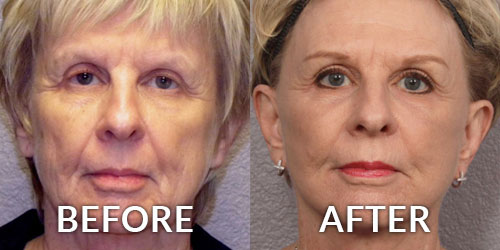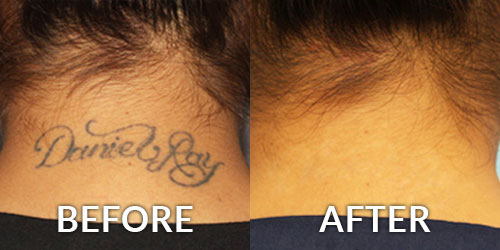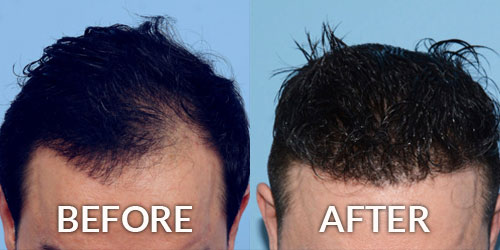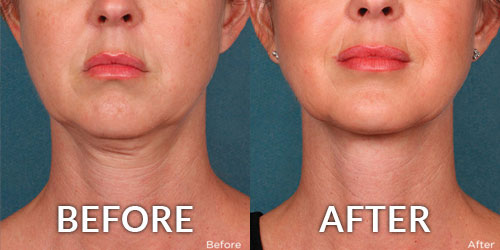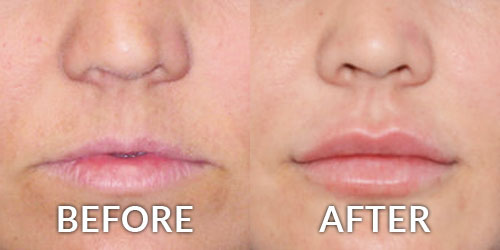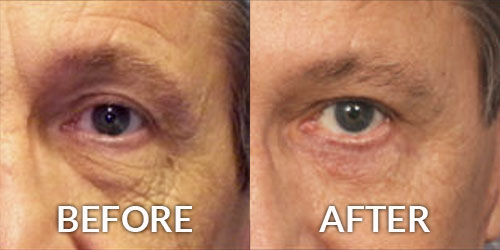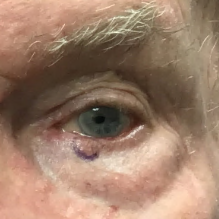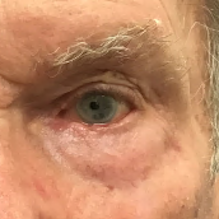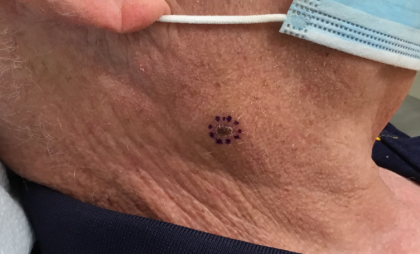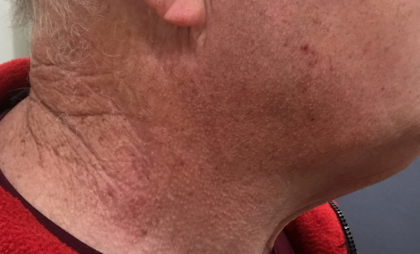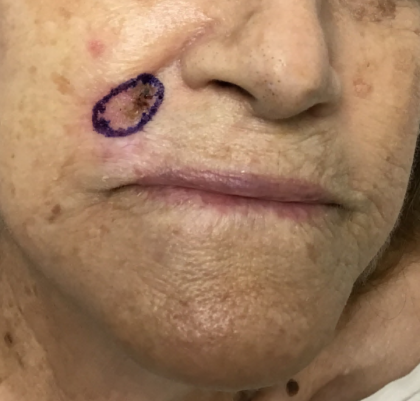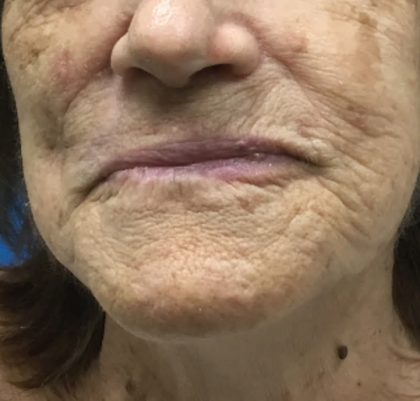Mohs Surgery
Consultations offered at our two convenient locations in Phoenix and Scottsdale
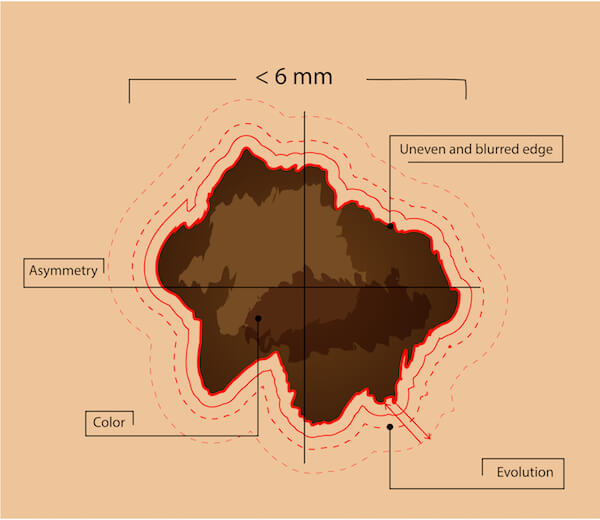
Mohs surgery is a specialized method of removing skin cancer. Cancer is a difficult diagnosis for anyone who receives it, and it can be complicated even further when located in sensitive areas such as the face, nose, ears, scalp, etc. If skin cancer appears in a vulnerable region, it must be dealt with delicately and precisely. Dr. Nichelle Madden has honed her considerable surgical and aesthetic skills to treat carcinoma layer by layer, celebrating the natural contours of one’s profile. As a board-certified dermatologist, with additional fellowship training in Mohs surgery, Dr. Madden has treated all types of skin cancers on every part of the body.
You were beautiful before cancer, and you will be beautiful after cancer. Never let the disease change your brave face. The dedicated staff at Phoenix Skin is eager to join you in your triumphant battle to reclaim your complexion. To schedule an appointment with Dr. Madden or one of her caring, knowledgeable associates, contact us at your earliest convenience.
Contents
- 1 Before and After Photos
- 2 What Is Mohs Surgery?
- 3 Why Should I Get Mohs Surgery at Phoenix Skin?
- 4 Benefits of Facial Reconstructive Surgery
- 5 Private Consultation in Phoenix or Scottsdale
- 6 Preparation
- 7 The Mohs Surgery Procedure
- 8 Reconstruction After Mohs Surgery
- 9 Recovery and Results
- 10 FAQ
- 11 References
Before and After Photos
What Is Mohs Surgery?
Mohs surgery, or Mohs micrographic surgery, is a specialized surgical method of removing skin cancer, pioneered by Dr. Frederic Mohs. It is an exacting technique that strips away cancerous cells, layer by layer, to preserve as much healthy skin as possible. Mohs allows for not only the removal of cancer tissue, but also the focused examination of the skin’s microscopically thin layers as the surgeon works.[1] Mohs surgery is commonly used to treat Basal Cell Carcinoma, Squamous Cell Carcinoma, and other rare skin cancers anywhere on the body. The process utilizes real time microscopic analysis to ensure the cancer is removed in its entirety, while also removing the least amount of healthy, non-cancerous, tissue. Mohs surgery is not necessary for all skin cancers, but it is useful when:
- The location of the skin cancer is near areas that are important for daily activities, like the fingers, or for appearance, like the nose.
- Earlier treatments have not worked
- A tumor is large; and
- Regular surgery is less likely to remove the cancer.
When skin cancer affects sensitive areas like the hands, feet, genitals, eyes, nose, ears and mouth, Mohs is the optimal surgery to remove it. The traditional excision method may remove the cancer, but it can unnecessarily take healthy tissue along with it. Mohs surgery, however, selectively peels away cancerous material as it explores the skin’s ultrathin layers.
Why Should I Get Mohs Surgery at Phoenix Skin?
- If you have recurring skin cancer, then your last procedure may not have removed all of the cancerous cells. By using the Mohs method, your surgeon can be sure that the entirety of the localized cancer is gone, cell by cell.
- Some skin cancers have irregular, jagged, or discolored borders. Mohs surgery allows the doctor to examine the outlines of a lesion and delineate between the spreading cancer cells and the healthy skin surrounding them. In essence, Mohs defines the exact outlines of cancerous material and removes it precisely along its borders.
- If skin cancer spreads rapidly, then Mohs is an essential tool in exploring exactly where it exists and how to remove it comprehensively. Aggressive outbreaks of skin cancer require an equally aggressive method of removal. Mohs surgery allows doctors the chance to extract large areas of cancerous material with minimal risk to the patient.
In cases where skin cancer has grown to outsized proportions, even Mohs surgery cannot prevent the noticeable alteration of the patient’s appearance. Mohs may contain the problem, but the skin surrounding the cancerous region might need an artist’s eye to achieve full facial restoration. That is why Phoenix Skin is your ultimate resource as you explore the possibilities of Mohs surgery and its ensuing reconstructive aftercare.
Benefits of Facial Reconstructive Surgery
If skin cancer affects noticeable areas of your face like the brow, cheek, lips, or nose regions, then Dr. Madden can help restore their cosmetic glory. Her skillful touch celebrates the contours of your face and replenishes your luster.
In addition to the obvious aesthetic benefits of Mohs surgery, you may also enjoy a boost in confidence. The attentive staff at Phoenix Skin will work to alleviate your concerns and repair any damage left by skin cancer. You can hold your head high and show your face proudly thanks to Dr. Madden!
Private Consultation in Phoenix or Scottsdale
Communication is one of the most important ingredients in a recipe for wellness and happiness. We want to hear from you; tell us about your experiences with cancer, let us know how it changed your life, and please allow us the opportunity to join you in the fight against cancer.
As you can see in our blog, we take our patients’ health seriously. No question is too minor and no issue too major. Contact Phoenix Skin online or call 602-222-9111 (in Phoenix) or 480-473-9111 (in Scottsdale) to let us know how we can usher you through Mohs surgery.
Preparation
During your individualized consultation, we will provide you with a detailed set of instructions to properly prepare you for your Mohs procedure. Your directions will be tailored to you, so please follow them closely. In general, it is advisable to quit smoking at least two weeks before any surgical procedure. You should also cease taking blood thinners, like aspirin or ibuprofen, to promote optimal circulation. Dr. Madden can also advise you which (if any) skincare products to use to ready your skin for Mohs treatment.
The Mohs Surgery Procedure

Mohs surgery is almost always performed with the patient awake. We can offer medication to help you relax during the procedure if you feel it is necessary. The tumor and the skin around it are numbed with injections of local anesthesia. Dr. Madden removes the skin cancer that can be seen with the naked eye and takes it to our in-house laboratory. After the laboratory makes microscope slides with the removed skin cancer tissue, Dr. Madden looks under the microscope to check for any cancer cells left along the edges of the tissue. If more cancer is found, more tissue is removed along the sides or deep edge where the cancer is still present. This tissue is again processed by the laboratory and re-checked under the microscope by Dr. Madden. The process continues until all of the cancer is cut out. Once the entire cancer is removed, local tissue is typically used to close the surgical site with sutures. It is sometimes necessary to use skin grafts or flaps to cover the area where the tumor was removed.
Reconstruction After Mohs Surgery
Depending on the extent of the cancer removal process, you may require a reconstructive procedure to address the affected area. We must consider how much cancer was removed, the skin that it affected, and the current appearance of your surrounding tissue. Dr. Madden will continue your healing process by complementing the Mohs surgery with the appropriate reconstructive approach. You will receive one of the following closures based on the type, size, and location of your specific cancer:
Primary Closure
If the skin cancer is finite enough, it can simply be removed and stitched shut using the primary closure method.[2] This adjoins the two ridges of skin alongside the surgical site in a straight line. Since skin is sometimes complex, a simple line may result in darts and bulges along the suture area. Dr. Madden may need to remove additional skin to make the primary closure technique look and feel right for you.
Local Flap Technique
The majority of Mohs patients benefit from a local flap approach to reconstructive surgery. Dr. Madden can carefully harvest a flap of healthy tissue adjacent to the area already affected by Mohs. She then arranges this skin over the wound and carefully mends the tissue together with sutures. Your blood vessels will create a new network of circulation that maintains the health and beauty of your own skin.
Skin Graft Method
If the flap technique would require too much donor skin from the face, then you may opt to contribute skin from another area of your body. This tissue is commonly harvested from behind the ear, but many appropriate donor sites exist depending on your specific case. . Dr. Madden will discuss your options with you before proceeding. Her general strategy is to graft skin so that your harvest site is easy to conceal, yet still shares the same general thickness and texture as your facial skin. Once the appropriate graft is collected, Dr. Madden will expertly apply it to the area where your skin cancer once was.
Because it is not possible to know how many tries it will take to remove the entire tumor, patients should be prepared to be at the dermatology clinic or medical center for the entire day. However, most procedures take just a few hours.
Recovery and Results
Mohs surgery is performed on an outpatient basis, meaning you go home right after surgery. It is recommended to rest at home the first day, but most people can go about their daily activities as normal while the skin heals thereafter. You can expect minimal bleeding and discomfort during and after surgery.

If you require a skin graft as part of your reconstructive procedure, then we will fit you for a bolster dressing. This is a specialized bandage that holds the graft in place and allows for blood flow to find its proper course through the affected tissue. Bolsters also apply enough pressure to prevent fluids from building up beneath the graft and pushing it away from the underlying tissue.
We will welcome you back in approximately 7-10 days to remove any dressings you may have and to monitor your progress. While we want to make sure every facet of your surgery goes perfectly, we must make a confession: what we really want to see is the smile on your face! Reconstruction is about more than merely stitching you up; it’s about raising you up. Dr. Madden can elevate your spirit as she addresses your aesthetic and health concerns. Just take a look at our glowing reviews and see how happy our previous patients have been.
FAQ
How does reconstructive surgery after Mohs work?
If skin cancer has altered the look of your face, Phoenix Skin can help. Our team can create a strategy to address any gaps or marks that skin cancer treatment left behind. We can use skin grafts or local flaps to reconnect the microvascular tissue along the skin and keep you looking and feeling your best.
How much does Mohs surgery cost in Phoenix?
Health should never be cost-prohibitive. Dr. Madden is committed to providing you the best care at the right price. To learn how Phoenix Skin will work within your budget to deliver facial restoration solutions, please visit our financing page. We also run occasional specials to help lower costs on certain procedures. Check back periodically to see how we can help achieve your aesthetic and wellness goals.
References
- Swanson, N. A. (1983). Mohs Surgery: Technique, Indications, Applications, and the Future. Archives of Dermatology. 119(9):761–773. DOI: 10.1001/archderm.1983.01650330053014
- Leibovitch, I., Huilgol, S. C., Selva, D., Richards, S., & Paver, R. (2005). Basal cell carcinoma treated with Mohs surgery in Australia II. Outcome at 5-year follow-up. Journal of the American Academy of Dermatology. 53(3), 452-457. https://doi.org/10.1016/j.jaad.2005.04.087
- Etzkorn, J. Alam, M. June 2020. What is Mohs Surgery? JAMA Dermatology. Vol 156, number 6. DOI: 10.1001/jamadermatol.2020.0039


